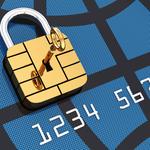
If you don’t yet know what EMV means, you need to find out. As of Oct. 1, there were big changes in the world of credit and debit card use, and shopping as you knew it is becoming a thing of the past.
EMV is the new acronym incorporating Europay, MasterCard and Visa. It designates a new type of credit or debit card, one that has a small chip embedded that takes the place of a magnetic strip for identifying the cardholder. Credit card data is stored on an integrated circuit through the chip. A purchaser must put his card in a reader, which applies a one-time code to the transaction. The process is expected to help stymie would-be fraudsters.
The chip is a response to the gigantic card breaches that occurred in some of the country’s largest merchants in recent years. Billions of dollars in losses are plenty of impetus for trying to curb unhealthy fraud.
The chip has been in use in many other countries for some time and it is deemed very efficient in preventing counterfeit fraud, which accounts for about two-thirds of fraud that occurs in stores. It isn’t the silver bullet that will bring an end to all fraud that takes place in the commercial world, but it is one powerful weapon in the battle. Experts are hard at work on other measures, such as tokenization, that will be applied as they become practical.
But despite the fact that the Oct. 1 deadline shifts blame for fraud to the banks and merchants who failed to incorporate the EMV technology by that date, the transition is proving more difficult than was expected. Just over half of American cardholders had received the new chip-embedded cards by the deadline. Relatively few of them have been educated about how the new technology works. According to surveys, 68 percent of those who have received new cards have no idea what it’s all about.
On the other side of the counter, thousands of merchants lack the equipment needed to read the new cards. Clerks and others expected to use the equipment are not all trained in the technology.
EMV is a giant step forward toward reducing fraud, but only if consumers, card issuers and merchants all get on board to make the new chipped cards effective.
As a consumer, what can you do? If your financial institution hasn’t issued you new chipped cards, ask why. And pay attention to the information you are receiving that will make you a part of the new shopping mode. Pressure the merchants with whom you deal to step up to the new technology and then be patient as it comes on line. (Keep in mind that getting the new equipment hasn’t always been easy for merchants. Small businessmen, in particular, have faced challenges in preparing to make the changes the chipped cards require. This is new territory for everyone involved. It changes the way clerks and managers interact with customers, according to those on the selling side of things.) But making it work is to everyone’s advantage.
Of course, the proof will be in the pudding. If the expectation that chips will make a big dent in fraud doesn’t pan out, expect other approaches.
